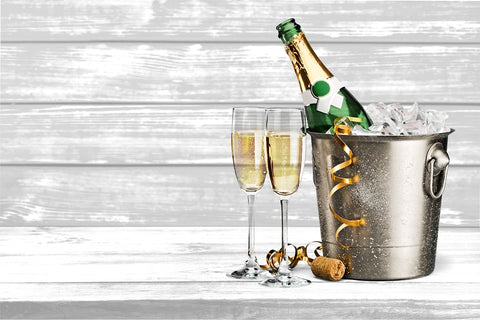Caviar FAQs
Caviar is a luxurious addition to any event that instantly makes the day feel special. Whether you’re celebrating an accomplishment, a wedding, a graduation, or simply trying to add an element of indulgence to the everyday, caviar is sure to please you and your guests. However, not all caviar are created equal, and there’s a lot to consider when selecting and buying caviar online. New to the world of fine seafood and roe? Let Khavyar act as your concierge and provide answers to all your questions here.
What is caviar?
The word “caviar” itself refers specifically to the eggs of the sturgeon— while other varieties of fish eggs may be called “caviar”, by law they must describe the fish they originated from i.e. “salmon caviar”. This is also the reason that you will often see the proper Latin name for the species following the name of a variety.
How should I serve caviar?
Caviar should be served cold. Caviar can be served straight from the tin, or can be presented atop traditional blini with crème fraiche. Caviar is also commonly used as a garnish on other dishes. Regardless of how it is presented, caviar should be handled delicately using mother-of-pearl spoons, since this neutral material will not adversely affect the flavor of the caviar.
How do I prepare caviar?
When ordering online from Khavyar, your caviar arrives sealed and chilled, ready to enjoy— simply serve it promptly to ensure freshness. For best results, maintain its temperature by couching the tin in crushed or shaved ice.
What pairs with caviar?
When deciding what drinks to serve with caviar, it is important not to overpower its nuanced flavor profile. For this reason, traditional caviar pairings include chilled vodka, Champagne, or dry white wines such as Chardonnay. However, as you continue to develop your taste for caviar, don’t be afraid to branch out and experiment— you may stumble onto a great cocktail or wine pairing.
How do I store caviar?
Unopened tins of caviar should be kept in the coldest part of your refrigerator (usually a drawer reserved for vegetables). Ensure, however, that the caviar does not freeze, as this will disrupt its delicate texture. The ideal temperature for storing caviar is between 28 and 30 degrees Fahrenheit.
How long is caviar good for?
Because it is perishable, caviar should be enjoyed soon after purchasing— for this reason, we advise timing your order to arrive approximately two weeks or less before you intend to serve it. Caviar should be removed from your refrigerator as little as ten or fifteen minutes before serving. Once opened, leftover caviar can be kept in an airtight container and keep it in the coldest part of your refrigerator for no more than two days.
What is a serving size of caviar?
We recommend ordering no less than 30 grams per every two people you intend to serve. Each serving should be at least a heaping half-teaspoon, whether served on blini or crackers, or enjoyed directly from the tin. This safeguards that the caviar’s full flavor profile can be experienced in each bite.
What does caviar taste like?
Caviar is prized for its nuanced and subtle flavors. Each variety tastes slightly different, but the most common words used to describe the taste of caviar are nutty, rich, briny, buttery, and earthy. The best way to discover the taste of caviar, however, is to sample a variety of types for yourself.
What are the nutrition facts for caviar?
Caviar provides many health benefits and is a good source of protein, Iron, and Vitamins D and B12. Caviar averages 40 calories per tablespoon, with 3 grams of fat, 1 gram of carbohydrates, and 4 grams of protein. Caviar also has 94mg of cholesterol and 240mg of sodium per tablespoon.
How is the price of caviar decided?
Caviar is a delicacy that requires extremely precise harvesting techniques, as well as a high level of skill to prepare. As caviar is no longer wild-caught due to past overfishing, it is instead farmed. Sturgeon must reach maturity (a process which can take up to 20 years or more) before producing the unfertilized eggs that will become caviar, which is reflected in the price. Caviar is harvested manually, sorted through and purged of irregularities, and salted with a precise quantity of salt— no more than 8%—before being packaged. This intricate, labor-intensive process also contributes to the cost. Ultimately, the price of individual caviar varieties are determined by the grade of caviar, which is dependent on the size and color of the individual pearls.




